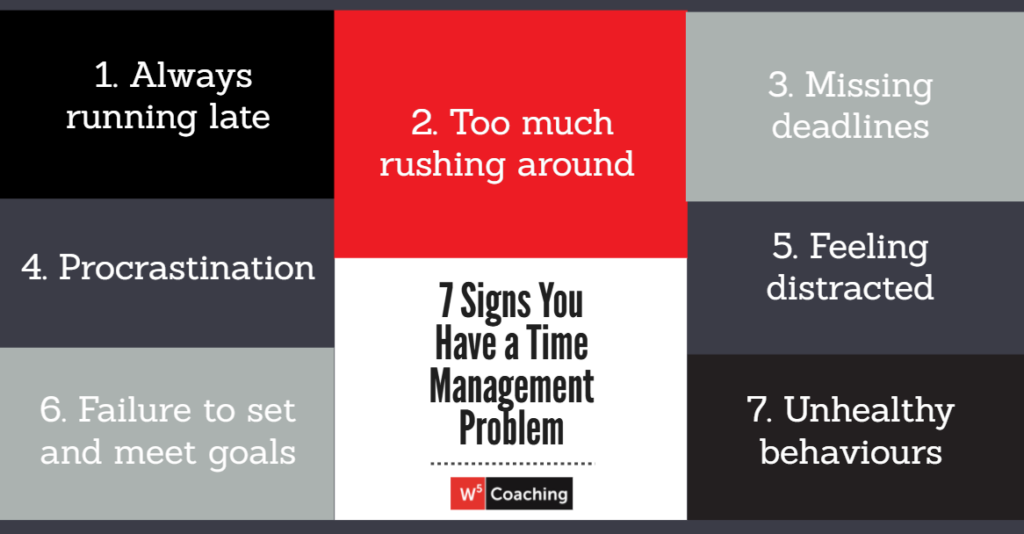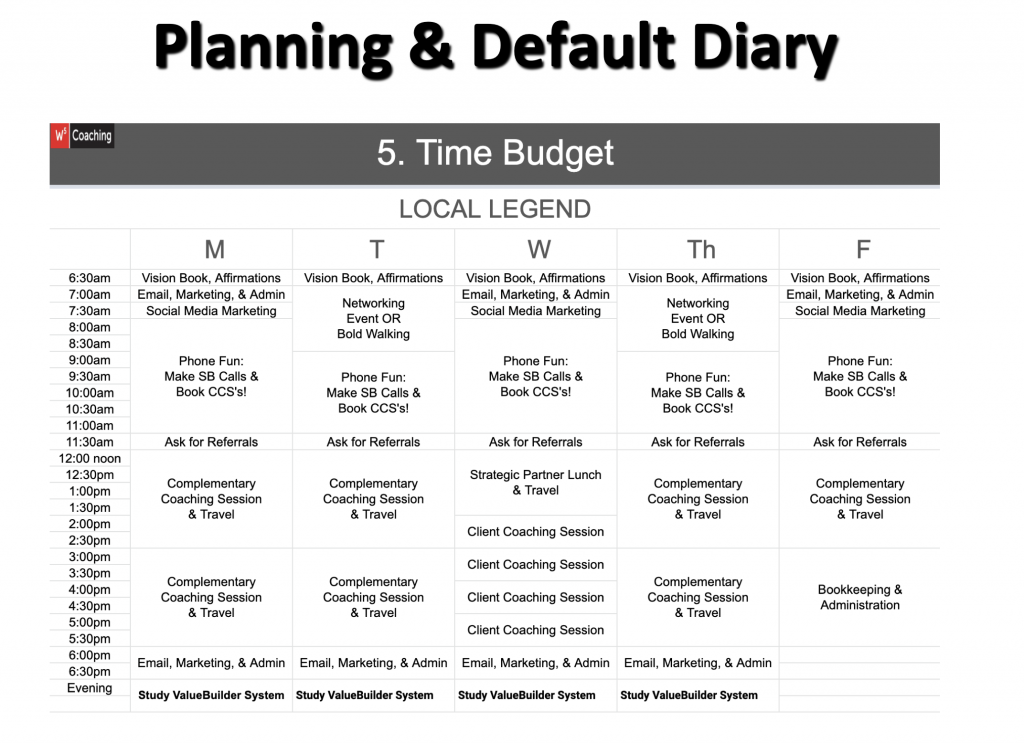How to Take Back Your Time and Improve Your Productivity

Do you never have enough time?
Are you constantly putting out fires, tackling one urgent crisis after another?
Do you find yourself postponing important projects simply because you can’t find the time?
When was the last time you took an entire weekend off without stress?
At W5 Coaching, business owners usually reach out when they are exhausted, discouraged, and overwhelmed.
They know they should be focusing on the bigger picture—growth, strategy, and leadership—but they feel trapped in the day-to-day chaos and don’t know where to start.
7 Signs You Have a Time Management Problem
If you’re experiencing any of these seven symptoms, you might have a time management issue:
- Always running late
- Too much rushing around
- Missing deadlines
- Procrastination
- Failure to set and meet goals
- Feeling distracted
- Unhealthy behaviour (lack of sleep, nutritious eating, etc.)

Without effective time management, business owners can feel constantly overwhelmed and out of control—bouncing from task to task with little breathing room.
If this cycle continues, it can lead to burnout, affecting not just your business, but also your health, relationships, and overall well-being.
Take Back Control of Your Time
Taking control over your time is the first step you need to take to gain control over your business again.
Or as Jim Rohn put it:
“Time is more valuable than money. You can get more money, but you cannot get more time.”
At W5 Coaching, the first thing we do with most clients is help them reclaim 5-7 hours each week—without working harder.
Here’s how:
- Conduct a time audit to identify where you’re currently spending your time
- Set up a default diary to proactively manage your week
- Create 2 time leverage habits to increase your productivity
1. Conduct a Time Audit
 Before you can improve, you need to measure.
Before you can improve, you need to measure.
The first step is to track exactly where your time is going.
At the end of the week, review your time log and ask:
- Were there tasks that you could have delegated to someone else on your team?
- Did you spend time on low priority tasks that could have been put off?
- Are there any tasks that took up your time that you didn’t really have to do at all?
One of my clients resisted this exercise, saying she was too busy to track her time. But once she did, she had a powerful realization:.
“I got a reality check about how long things really take. This has made project estimating easier and more accurate. I’m far more realistic about what I can get done in a day or week and I schedule appropriately. I’m less stressed and more productive. This assignment turned out to be so helpful that I’m still tracking my time six years later.”
2. Set up a Default Diary (Time Blocking)
A Default Diary, also known as time blocking, helps you take proactive control of your schedule by dedicating specific time slots for high-impact activities.
Ask yourself:
- What are my top priorities this week?
- What must I do to achieve them?
- How much time does each task need?
- How can I structure my week to match these priorities?
Then schedule them into your calendar!
Remember that multitasking and switching back and forth between activities is not productive.
For example, if you handle a lot of client calls, batch them together and schedule prep time beforehand. Instead of scrambling before each call, use a dedicated planning block to streamline your workflow.
Here is an example of a Default Diary for someone who is a consultant:

3. Create 2 time leverage habits
Simple daily and weekly habits can transform your productivity.
1. Spend 20 minutes planning your week
At the start of the week, set aside 20 minutes to map out your big priorities. Remember Steven Covey’s time jar?
Place the big rocks first (your highest-priority work) before filling the gaps with smaller tasks.
2. Spend 10 minutes reviewing each day
At the end of each day, spend just 10 minutes reviewing what you accomplished and adjusting your plan for tomorrow.
This small habit eliminates decision fatigue and allows you to hit the ground running every morning.
Imagine running your business without the stress of never having enough time
Small, intentional changes can help you reclaim your time, boost your productivity, and reduce stress – leaving your time to focus on what really matters.
Things like growing your company, spending time with family, or finally taking a real vacation.
Ready to take back control? Book a free 15-minute call to talk about coaching.

Get Your Time Back
How to escape overwhelm and gain time freedom in your business
Get control of your email and calendar
Prioritize your most important tasks
Become more productive than you ever thought possible
Ready to free up 5-7 hours per week? Download this guide today! Enter your details below to receive your free copy!
